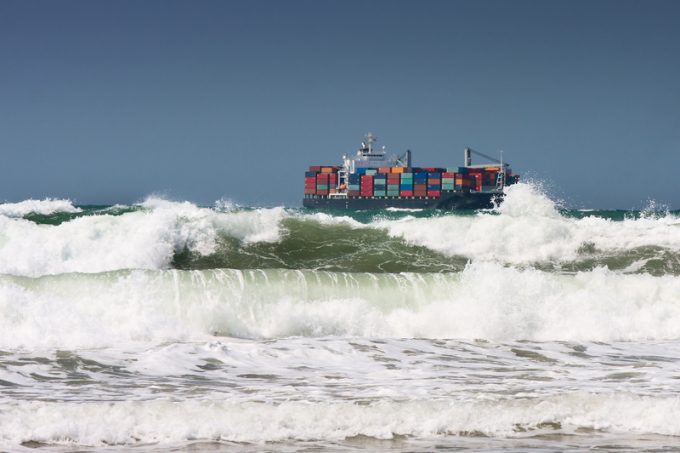Maersk appoints John Wetherell to head its global airfreight forwarding
Maersk has appointed John Wetherell (above) as its global head of airfreight forwarding. It is ...

Severe congestion in South Africa’s ports is forcing shipping lines to omit the country from their services.
Currently 96 vessels are waiting at anchor outside ports, costing the economy R98m ($5.32m) a day, according to the South African Association of Freight Forwarders (SAAFF).
Maersk is among the lines skipping calls; earlier today it warned of long waiting times at Durban and noted that “CMA has triggered a Cape Town omission on the APL Houston eastbound voyage due to berthing congestion in Cape Town”.
The congestion appears to be the result of a perfect storm of poor weather affecting operations and ports operator Transnet experiencing issues with equipment.
SAAFF said: “The crisis is arguably more significant than the October strike last year, as the massive economic cost of 96 vessels waiting outside our ports cannot be understated, and the current situation must be put into perspective.
“Despite being in a crisis, port operations in the past week were again bedevilled by poor weather conditions as well as equipment breakdowns and shortages.”
Durban’s terminals are most affected, with delays of about nine days. Cape Town, hit by bad weather, has also seen the arrival of new shore tensioning units delayed to the second week of December. However, congestion has eased.
But SAAFF said: “Unfortunately, this is not due to any improvements in performance or productivity, but rather to a drop in cargo volume and the bypassing of Cape Town, which is clearly visible in the Ngqura statistics, with some overflow into Durban as well.”
SAAFF is urging stakeholders to work together to help ease the congestion, but noted it will take some time to find a solution.
“There is some hope; however, only a little for the immediate short term,” said Jacob van Rensburg, SAAFF’s head of research and development, adding that airfreight could help ease some congestion.
However, he pointed out that SME cargo owners were suffering most from the delays, and airfreight was not a “viable option” for many.
He said: “The congestion can (and will) be cleared, but probably only by the end Jan/early Feb. The main contributor is the lack of useable equipment, as Transnet has not kept up with maintenance – especially half-life maintenance of key equipment. The problem is multifaceted and long-term in nature – meaning that the current operations are really working with their hands tied.”
He added that some “lines are choosing to ship cargo to and from South Africa via the hub port of Port Louis”.
SAAFF noted: “A significant issue has been the state of affairs in Transnet. Fortunately, immediate collaboration with industry partners is under way to source available equipment. Furthermore, a long-term OEM strategy, to be concluded hopefully the end of the year, aims to address equipment challenges by awarding contracts for major equipment across 48 brands.
“Container handling equipment is expected to be delivered within six to 24 months.”
Transnet wants to arrange private-sector partnerships to help modernise infrastructure, while SAAFF believes all stakeholders in South Africa should work together.
“Players can assist in their behaviour by ensuring a level of fluidity is achieved,” explained Mr van Rensburg. “For example, transporters could better coordinate the evacuation of the port, as we often see a significant influx of trucks early in the morning and need more spread throughout the rest of the day.”
SAAFF has calculated that indirect costs to the economy are R26m a day, while the movement of some R7bn of goods has been impeded.
“Simply put, the current situation amounts to at least R48.5m of pure sunken cost just sitting outside at anchorage a day. Furthermore, with the port congestion surcharges for containers awaiting implementation, this figure jumps to R98m. We are already paying nearly 10% more with the current conditions in direct cost.”
SAAFF concluded: “We must improve operational efficiency and increase throughput, or else the trade, transport, and logistics industries will continue to curtail desperately needed economic growth for South Africa.”
Comment on this article